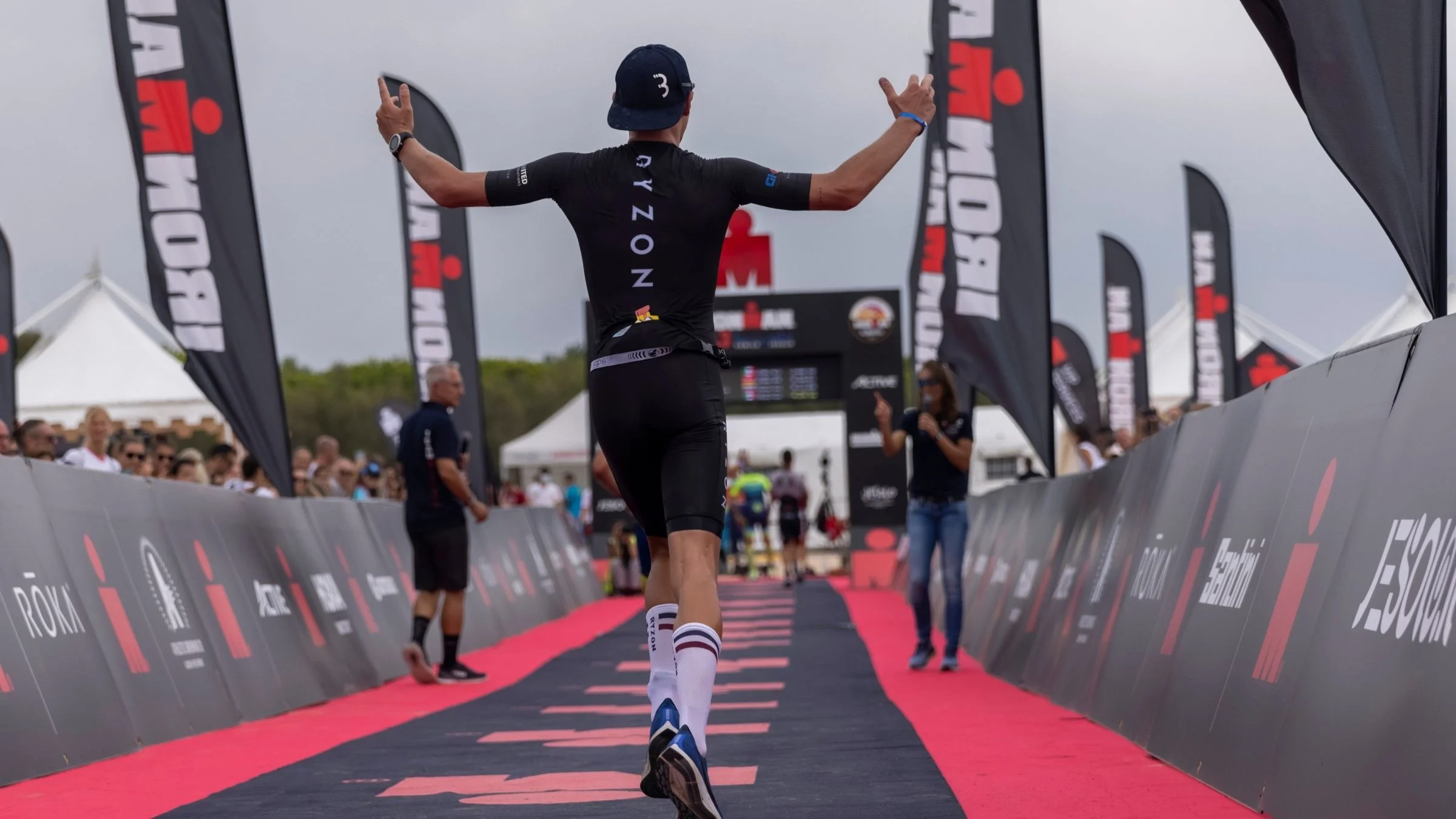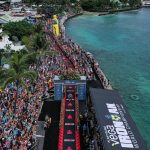Are you ready to push your mind and body to the limit? The Ironman triathlon is not for the faint of heart, but for those who are willing to conquer a 140.6-mile journey. And as with any monumental challenge, proper training is essential. But how long does it take to train for an Ironman? Let’s break down this ultimate test of endurance in more detail.
The average training time for an Ironman is 20 weeks, or roughly five months. That may seem like a long time, but trust us, it will fly by. During these 20 weeks, you’ll be dedicating 12-16 hours per week to swimming, biking, and running. So, how long does it take to train for an ironman?
Training for an Ironman is a significant commitment and the duration can vary depending on your current fitness level and experience with triathlons. Here are some general guidelines:
- If you can already complete a 70.3 Ironman, you might be able to train for a full Ironman within 6 months.
- If you’re new to triathlons or triathlon training, it could take up to 1 year to prepare.
- A typical training plan might run for 24-30 weeks, starting with 8-10 hours per week and ramping up to an average of 12-15 hours per week as you get closer to the race.
- Some sources suggest a minimum of 13 hours of training per week to get in shape for an Ironman race.
So, let’s embark on the journey to becoming an Ironman.
Table of Contents
- 1 How Long Does It Take To Train For An Ironman?
- 2 Factors that Affect Training Duration for an Ironman
- 3 Building a Solid Base of Fitness
- 4 Importance of Experience in Triathlons
- 5 Setting Realistic Goals for the Race
- 6 Demands of an Ironman Race and Training Plan Considerations
- 7 Seeking Guidance from Coaches and Experienced Triathletes
- 8 Conclusion
How Long Does It Take To Train For An Ironman?
Becoming an Ironman triathlete is no easy feat, and it takes dedication and consistent training to achieve this goal. On average, it can take anywhere from 6-12 months to train for an Ironman event. However, this timeframe can vary depending on a variety of factors, including your current fitness level, experience in triathlons, and your goals for the race.
For seasoned athletes who are already active and have previous experience with triathlons, the training time may be shorter. However, for beginners or those with ambitious goals, it may take longer to prepare for an Ironman event. It’s crucial to have a well-structured training plan that gradually increases in volume and includes rest days to avoid overtraining and injury.
It’s always a good idea to seek guidance from a coach or experienced triathlete when training for an Ironman. They can provide valuable insights and help tailor your training plan to your individual needs. Additionally, having a support system can make the training process more enjoyable and motivating.
So, how long does it take to train for an Ironman? The answer varies based on the individual, but one thing is for sure – it takes hard work, determination, and a well-structured training plan to become an Ironman triathlete.
Factors that Affect Training Duration for an Ironman
When training for an Ironman triathlon, there are several key factors that can impact the duration of your training. These factors include consistency, injury mitigation, high-intensity training, nutrition and body composition, volume, race-specific training, and supplementary factors such as sleep, nutrition, and strength work.
Achieving deep, Ironman-specific fitness requires consistency over time. This means averaging 10 hours and 24 minutes per week of swim-bike-run training, with a focus on spending approximately 50% of the time cycling, 35% running, and 15% swimming. Without consistent training, it can be challenging to build the necessary endurance and stamina for an Ironman race.
To avoid injuries during Ironman training, it is essential to prioritize injury mitigation. This can be achieved by carefully planning your training schedule and incorporating proper rest and recovery periods. Additionally, focusing on high-intensity work on the bike can help reduce the risk of injury compared to running.
Endurance racing requires a significant amount of energy and stamina, making nutrition and body composition critical factors in determining training duration. By achieving good body composition with a proper balance of muscle mass and body fat, you can optimize your power-to-weight ratio for better performance.
While volume is an essential factor in Ironman training, it is not the only determining factor for success. With deliberate efficiency in training techniques, it is possible to achieve success with less volume than the typical Kona Qualifier.
As an Ironman race approaches, it becomes increasingly important to focus on race-specific training. This involves increasing volume and dedicating more time to building efficiency at race-intensity levels.
In addition to these factors, other supplementary factors such as sleep, nutrition, and strength work also play a crucial role in training duration. Proper rest and nutrition are essential for recovery and preventing overtraining, while strength work can help improve overall performance.
Building a Solid Base of Fitness
Building a solid foundation of fitness is crucial for any athlete, especially those preparing for an Ironman triathlon. It lays the groundwork for success and prepares the body for the intense training required for such a grueling race.
To create a strong base of fitness for an Ironman, here are some key elements that should be included in your training plan:
Consistent training schedule and progression:
Consistency is key when it comes to building a solid foundation of fitness. A well-designed training plan that includes regular workouts and gradually increases in intensity and duration allows the body to adapt and improve over time.
It’s important to stick to your training schedule, but also pay attention to your body’s signals and make adjustments as needed.
Proper nutrition and hydration:
Fueling your body properly is vital for building a strong base of fitness. A well-balanced diet that provides enough carbohydrates, protein, and healthy fats will give you the necessary energy for training.
Adequate hydration is also essential, as dehydration can negatively impact performance and recovery.
Adequate rest and recovery:
Rest and recovery are often overlooked but are just as important as training itself. Giving your body time to rest and repair prevents burnout and injuries. Incorporating rest days into your training schedule and getting enough quality sleep are crucial components of building a solid base of fitness.
Strength and endurance training:
Building muscular strength and endurance is crucial for completing an Ironman triathlon. Including strength training in your routine helps prevent injuries, improves overall performance, and increases speed and power.
Incorporating variety in workouts:
To build a well-rounded foundation of fitness, it’s essential to incorporate a variety of workouts into your training plan.
This can include different types of cardio such as swimming, cycling, and running, as well as cross-training activities like yoga or Pilates.
Listening to your body:
Every athlete’s body is unique, so it’s important to listen to your body and make adjustments as needed.
If you feel fatigued or experience pain, take a step back and allow your body time to recover. Ignoring warning signs can lead to burnout or injury, derailing your training progress.
Importance of Experience in Triathlons
How long an athlete trains for an Ironman race depends a lot on how many triathlons they’ve done before. People who have done a race before are more aware of their bodies and know what it takes to train and compete, which helps them prepare more efficiently.
They also know more about stamina and pace, and they are better at making changes, which can save valuable time during an Ironman run.
Additionally, having completed a triathlon before gives you access to a network of helpful teachers, training groups, and experienced triathletes.
It’s important to note, though, that having done a triathlon before doesn’t mean you’ll train for an Ironman race faster. Age, fitness level, and other personal obligations are also important. No matter how much experience you have, you need to train and get ready for an Ironman race in order to do well.
Setting Realistic Goals for the Race
When it comes to setting a realistic goal for your Ironman race training timeline, there are several important factors to consider. These factors include your personal fitness level, the time you can commit to training, the race date and location, any previous injuries you may have, and your mental preparedness. By taking these factors into account, you can create a training plan that is tailored to your specific needs and significantly improve your chances of completing an Ironman race successfully.
One crucial factor to consider when setting a realistic goal for your Ironman race training is your personal fitness level. Being honest with yourself about your current fitness level will help you establish a realistic starting point and avoid pushing yourself too hard. This will also allow you to create a training plan that gradually increases in intensity and helps you avoid injury.
In addition to your fitness level, the time you can commit to training is another crucial factor. It’s essential to be realistic about how much time you can dedicate to training each week. It’s better to have a consistent training schedule with shorter workouts than trying to fit in long sessions sporadically. Consistency is key when it comes to preparing for an Ironman race.
The race date and location are also significant considerations when setting a realistic goal for your Ironman race training timeline. Factors such as weather conditions, terrain, and altitude all play a role in how challenging the race will be. Be sure to research these aspects and take them into account when creating your training plan.
Previous injuries should also be considered when setting a realistic goal for an Ironman race. You don’t want to aggravate an old injury or risk a new one by pushing yourself too hard. Be sure to consult with a doctor or physical therapist before starting any training program if you have previous injuries.
Lastly, mental preparedness is crucial when it comes to achieving your goals in an Ironman race. Training for a race of this magnitude requires not only physical but also mental strength. Be sure to set smaller, achievable goals along the way to help you stay motivated and build your confidence as you progress towards the race.
Demands of an Ironman Race and Training Plan Considerations
Creating a training timeline for an Ironman race requires careful consideration of several key factors. Unlike other triathlon distances, the demands of a full-distance race are unique and require specific training considerations.
- Assessing fitness level and current training: Before embarking on an Ironman training plan, it is crucial to evaluate your current fitness level and training habits. This will help determine a realistic timeline and set achievable goals.
- Time commitment: Training for an Ironman is a significant time commitment, with a 2.4-mile swim, 112-mile bike ride, and 26.2-mile run. It is important to consider your schedule and ensure you have enough time to dedicate to your training.
- Considering race date and location: The date and location of an Ironman race can also impact your training timeline. Factors such as weather conditions, elevation changes, and terrain should be taken into account when planning your training.
- Consultation for previous injuries: If you have any previous injuries or ongoing health conditions, it is vital to consult with a medical professional before starting an Ironman training plan. They can provide guidance on how to train safely and avoid exacerbating any existing injuries.
- Mental fortitude: Training for an Ironman requires not just physical strength, but also mental fortitude. It is essential to consider your mental preparedness and develop strategies to stay motivated and focused throughout the long training period.
The demands of an Ironman race differ significantly from other triathlon distances in various ways. Firstly, the sheer length of the race requires a longer and more structured training plan compared to shorter distance events. Additionally, the intensity and volume of training increase significantly as well.
Unlike shorter distance triathlons where speed is the primary focus, Ironman races require more emphasis on endurance and pacing. This means incorporating longer training sessions and gradually building up your endurance over time.
Another crucial difference is the emphasis on proper fueling and hydration during an Ironman race. With the length of the race, it is vital to have a solid nutrition plan in place to avoid hitting the dreaded “wall” and maintain energy levels throughout.
Seeking Guidance from Coaches and Experienced Triathletes
| 1. | Personalized training plan: | Coaches offer customized and tailored training plans to cater to each individual’s specific needs, goals, and preferences. |
| 2. | Accountability and motivation: | With coaches, you can count on accountability and motivation to stick to your training plan and power through challenging workouts. |
| 3. | Wisdom and experience: | Experienced coaches can share their knowledge and provide valuable feedback to avoid common mistakes in endurance sports training. |
| 4. | Injury prevention: | Coaches monitor overall health and make sure you don’t overtrain or get injured during your training. |
| 5. | Time management: | In Ironman training, time management is crucial. Coaches can help optimize your training sessions, making the most of your time without any wastage. |
| 6. | Rest and recovery: | In addition to training, coaches also provide support for rest and recovery. This is crucial for making significant fitness gains and avoiding burnout. |
| 7. | Focused performance: | Guided by a coach, athletes can focus solely on improving their performance instead of worrying about planning their workouts. |
| 8. | Better preparation: | Hiring a coach with experience in Ironman races can be extremely beneficial for beginners or those attempting an Ironman race for the first time. With their expertise, you’ll be better prepared for the challenges ahead. |
| 9. | Team Enduro coaching packages: | Team Enduro offers specialized coaching packages designed specifically for Ironman training, providing athletes with comprehensive guidance from experienced coaches. |
Conclusion
To sum up, getting ready for an Ironman race is a difficult but satisfying process that requires commitment, regularity, and careful planning.
Most people train for an Ironman for 20 weeks, but this time frame can change depending on their experience, fitness level, and goals. Setting a solid base of fitness, mixing up your workouts, and paying attention to your body while you’re training are all very important.
People who have done triathlons before can also help newcomers by giving them useful information and tips. To avoid stress or failure, it’s important to set achievable goals and put harm protection first.
Ready to push your mind and body to new heights? Then put on your shoes and get ready.






